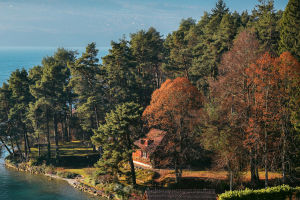Ice climbing is a compulsory course for climbing high mountains and snowy mountains. It is mainly natural ice, which is divided into ice waterfall and ice hanging. The equipment is required to be of high quality and durable.
Ice climbing, developed from rock climbing, is a required subject for climbing high mountains and snowy mountains, and one of the basic skills of mountaineering. Ice climbing is a sport carried out with the help of equipment and instruments, which requires high-quality and durable equipment.
Ice climbing, once regarded as an extreme sport that professional athletes can engage in, has become easy to get started and has become the latest winter fashion favorite of many outdoor sports lovers due to the development of many protective ice waterfalls and ice walls above and the continuous progress of ice climbing equipment in recent years. With its unique new cool equipment, fairy tale world like activity environment and stimulating physical and mental feelings, it has become a ballet on the ice waterfall.
Before the 1970s, ice wall climbing was an insurmountable obstacle in mountaineering exploration. Many mountaineers failed because they encountered ice walls in the process of climbing. In the late 1960s, some European climbers, based on years of experience, invented small ice picks with serrated pickaxes and ice claws with hard front thorns. Many climbers use this improved new equipment to search for ice walls everywhere for climbing, and further improve their equipment and technology while climbing ice walls. For example, Yvon Chouinard, Jeff Lowe, and Greg Lowe in the United States have become synonymous with modern ice climbing. Modern ice climbing technology has been pushed to a new level by European mountaineers and American mountaineers who go to Europe for ice climbing. They have created many very difficult climbing routes, making ice and snow climbing technology higher and higher. Ice climbing competitions have become increasingly popular in Europe and the United States.
Ice climbing techniques are mainly divided into French and German. French style originated earlier than German style technology, and its climbing characteristics are different from general rock-climbing technology: it uses a large ice pick to climb, so it adopts the "two-point support, one point movement" technology, that is, it uses one foot or one ice pick to support the body and move the other foot or ice pick. Therefore, its technical requirements are relatively high, and this method is generally not used when the ice slope exceeds 60 degrees. The essentials of French technique are hold the ice pick horizontally in front of your chest with both hands. Hold the ice pick tee in one hand, the pick tip down, and hold the ice pick 1/3 in the other hand. The distance between your hands is equivalent to the shoulder width. Tie the ice pick firmly on the ice with both arms, and then move your feet in turn, repeatedly.
German style is a relatively safe ice climbing method. Different from French style technology, it uses two small ice picks, which are inserted into the ice and snow slope in turns to rise or fall alternately. It is somewhat similar to the method of rock climbing, that is, "three points fixed, one point moving". Like rock climbing, this is "three-point fixation". Because it is very suitable for climbing ice walls with slopes greater than 60 degrees and less than 90 degrees, most ice climbers now use this technology.
When climbing ice, you should pay attention not to use too much force when inserting the ice pick into the ice, and the ice pick should not shake, because this will break the ice and affect its stability. When kicking, make sure the tip of the ice claw firmly plunges into the ice. Whether the crampons can stick firmly on the ice is related to the stability of the body and the quality of climbing.


